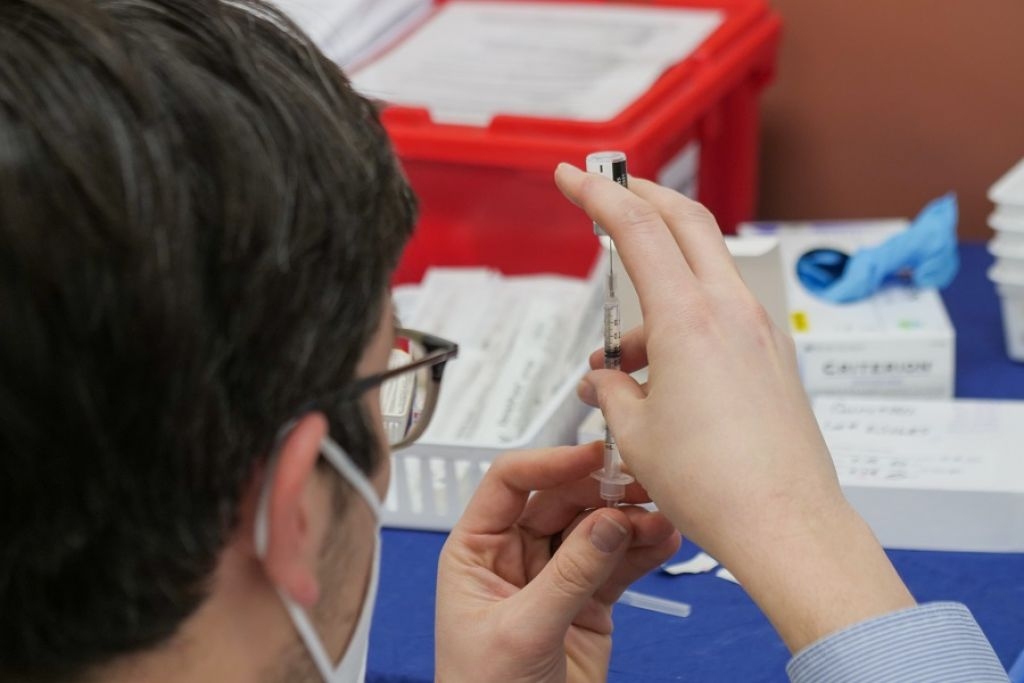Small-scale collaborations replace mass-vaccination sites as the fight against COVID-19 goes rural.
The era of mass vaccination clinics is over in Oregon, but the pandemic is not yet in the rearview mirror. That’s especially true in rural corners of the state. Low vaccination rates — and the appearance of the delta variant — have prompted public health officials to pivot their strategy for getting the state vaccinated.
More than 70% of Oregon adults have had at least one shot of a COVID-19 vaccine according to the Oregon Health Authority. But in less populated parts of the state, vaccination rates are significantly lower: while Multnomah and Hood River counties report vaccination rates of 74%, Umatilla and Grant county have a 42% vaccination rate, and Malheur’s is 37%.
Earlier this month, the B.1.617.2 mutation of coronavirus — nicknamed the delta variant— arrived in Umatilla County, deepening concern about lagging vaccination rates in rural Oregon. The variant is more communicable than previous incarnations, makes up 83% of all current U.S. cases — not just new cases — and has been labeled a “variant of concern” by the Center for Disease Control.
The state has reported 14 cases of the delta variant so far, nine of which appeared in Morrow, Umatilla, Union, Wallowa, Baker and Malheur counties.
Dr. Bukhosi Dube, senior public health advisor at the Oregon Health Authority, says we have “oversaturated the market” on mass vaccination sites. To raise vaccination rates in rural areas and curb the variant quickly, public health officials will need to rely on pop-up clinics, education and partnerships with rural employers.
“Some of our lowest vaccination rates are in the central south part of the state, and we are seeing more disease burden among populations that are less vaccinated,” Dube says. “Which is unfortunate, since COVID-19 is now a preventable disease.”
In recent months, rural areas have experienced some relief from the pandemic. Hospitals, for example, are not reporting bed or PPE shortages like those seen in the early days of the pandemic.
“Our COVID hospitalizations are consistently two patients or less, if any at all,” says Caitlin Cozad, marketing and communications director of Good Shepherd Health Care System in Hermiston.
But those numbers don’t tell the whole story. One barrier facing rural Oregonians seeking health care is lack of access to a hospital within a reasonable driving distance.
RELATED STORY: “Many Rural Hospitals Will Be Forced to Consolidate.”
Mass vaccination sites have shuttered due to high vaccination rates, and the Oregon Health Authority has pivoted to providing pop-up clinics at public spaces and places of employment. Dube encourages employers and business owners to enrollas vaccine providers.
“Right now it’s all about the ground game and going to people wherever they are. Farmers markets, block parties, baseball games, anywhere we can ensure we’re talking to them and answering their questions,” Dube says.
In addition to the access gap, there’s an information gap: vaccine skepticism is higher in rural areas, according to research by the Kaiser Family Foundation. Rural Americans are also more likely to believe that COVID-19’s seriousness has been exaggerated by the media and that getting a vaccination should be seen as a personal choice.
To address that, Dube and a group of advisors are traveling around the state to engage with community leaders to answer questions about the vaccine and encourage discussion.
While he believes that as many people should be vaccinated as possible, he also says being patient and respecting people’s boundaries is an important part of the plan.
“You have to understand where people are, and understand that it is okay for them to be in the deliberative phase. If they have questions or concerns, make sure they have their questions answered by somebody they know and trust,” Dube says.
“You have to meet people where they are at.”
To subscribe to Oregon Business, click here.








